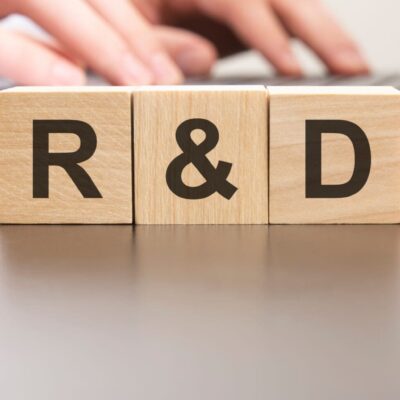What is Research & Development Tax Credit?
The Research and Development (R&D) tax credit, also known as Research and Experimentation (R&E) tax credit is a United States government sponsored tax initiative. It results in a dollar for dollar reduction in a company’s tax liabilities and is one of the best things American businesses can do to reduce their liability tax. Companies can submit documentation to file using the IRS Form 6765. The research and experimentation tax credit was essentially designed as an incentive to make research activities more affordable for businesses, strengthening American innovation.
Where Did the R&D Tax Credit Come From?
Originally, the R&D tax credit was created in the 1980s by U.S. Representative Jack Kemp and U.S. Senator William Roth. It has since expired eight times and been extended fifteen times. It was created for protecting Americans, encouraging investment in development, and increasing research activities along with basic research payments. With the competitiveness of today’s business world, Congress is encouraging businesses to increase their research activities; they do want to increase economic growth after all.
In the past, the Alternative Minimum Tax (AMT) actually did prevent businesses from being able to file. Then Congress passed the Tax Cuts and Jobs Act of 2017 (TCJA) which reduced the corporate tax rate, thus increasing the value of R&D tax credit.
The Tax Cut and Jobs Act (TCJA) was created to help lower business’ tax rates. They created the R&D tax credit and made it permanent while eliminating other corporate tax credits. As a result of the TCJA, there were changes in tax deductions beginning at the end of December 2021. Before the TCJA was created, companies had to reduce regular credit to 20% of Qualified Restoration Expenditures (QRE) to 13% of QRE spending or be forced to have reduced credit on alternative simplified credit. If you’re interested in learning more, the IRS has created specific guidelines for businesses to file for research and development tax credit in Internal Revenue Code (IRC) Section 41 and Section 174.
How Do You Qualify for the R&D Tax Credit?
Many businesses are not aware if they actually meet eligibility qualifications. Some believe there are special rules needed to qualify. While the correct documentation is required, in reality, over 60 industries can qualify for R&D credit in over 30 states, to offset tax liabilities. Some businesses’ daily operations can even qualify them, allowing them to receive basic research credit if it puts them over a certain base amount. Even start-ups can use this to their advantage.
Here are some of the factors small businesses and large businesses alike must be doing to qualify:
Create new or innovative products
Change existing products
Create new processes, techniques, prototypes, or software development
Hire engineers and designers for internal use or contract research to complete the job
There’s also an IRC section defining a four-part test to determine if a business is eligible for tax cuts and credit:
1) Qualified purposes – The purpose of business development has to either be creating new or improved business operations. It does not need to be something completely innovative.
2) Elimination of uncertainty – Companies must prove that they have tried to eliminate uncertainty when developing or improving products. Contract research expenditures in connection with the taxpayer’s trade can be deducted if uncertainty can be eliminated.
3) Process of experimentation – The company must prove its methods of process such as trial and error or simulation when attempting to reach a certain result in development. Oftentimes some of these processes involve computer software development and engineering.
4) Technological in nature – The experimentation must be related to the hard sciences such as physics, biological sciences, engineering, biology, or chemistry. But, the company is not required to expand upon these principles.
Creating or innovative new products or processes are known as qualified research activities, according to the IRS. The amounts incurred or paid during the research activities such as employee wages and supply costs are known as qualified research expenses. By increasing basic research activities in your business, you should qualify to file for the research and development tax credit and can receive regular credit or basic research credit.
What Should You Pay Attention To?
To file, you must claim some of the credit as a payroll tax credit against the employer section of your social security taxes. It is calculated based on the increases in research expenditures and activities. Small businesses can even use R&D credit to offset payroll taxes of a current tax year if their expenditures are greater than a certain base amount. Companies can no longer expense costs identified as IRC Section 174 research expenses. Instead, these expenses are charged to a capital account and deducted over 5-years.
The best way to calculate your R&D tax credit is by multiplying the fixed base percentage by the average of the business’ gross receipts from the last several tax years. Gross receipts are the total amounts of sales a business has, without eliminating expenses or costs.
When filing, there are two standard efforts to keep in mind: the Regular Research Credit (RRC) and the alternative simplified credit (ASC). The ASC tends to be the most favored of the two as it is simpler. The RRC method is better for businesses with a low base amount, including startups while the ASC method is better for companies with higher base amounts or who have complications with mergers and acquisitions. Keep in mind – you can decide between the two ways when filing in the current year, but be sure to submit the correct documentation to get your R&D credit.
Why Is Working With Us the Best Way to File?
It’s normal to have questions when filing for Research and Development, also known as research and experimentation tax credit, especially when tax hikes are in full swing. In fact, oftentimes businesses will file with the incorrect documentation. If you have any questions regarding the correct documentation, we would be happy to provide you with a documentation checklist.
Partnering with Stenson Tamaddon is important when filing for R&D tax credit to ensure all is done to keep you in compliance and maximize your overall return – and that’s why we’re here! We’ll take a look at your expenditures, base amount, tax rate, contract research, and gross receipts in all open tax years to determine how much credit you qualify for so that your business is able to receive its basic research credit. All records are kept for our internal use only.
Contact us today to learn how we can set your business up for success when filing for R&D credit.






